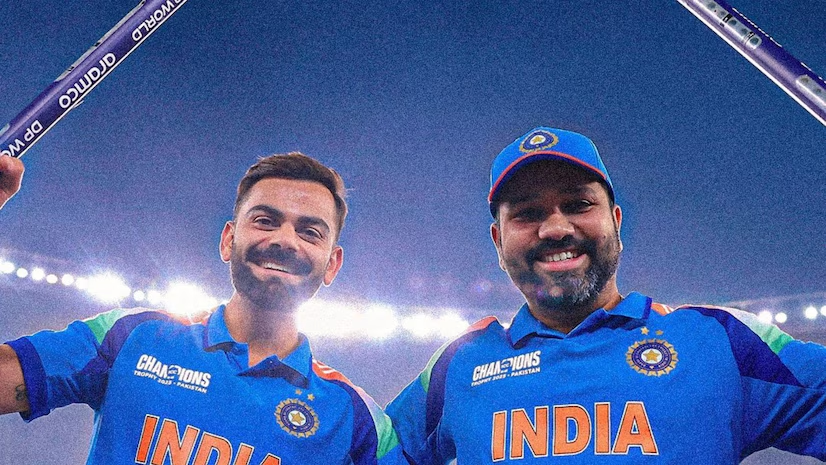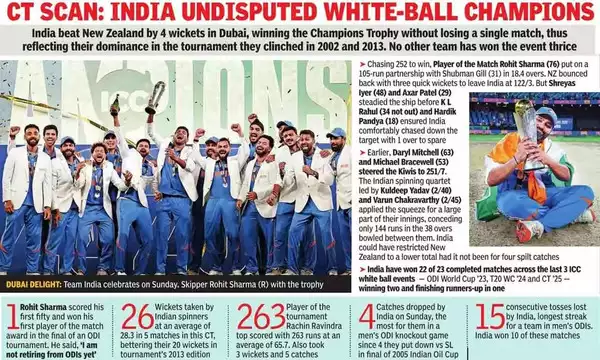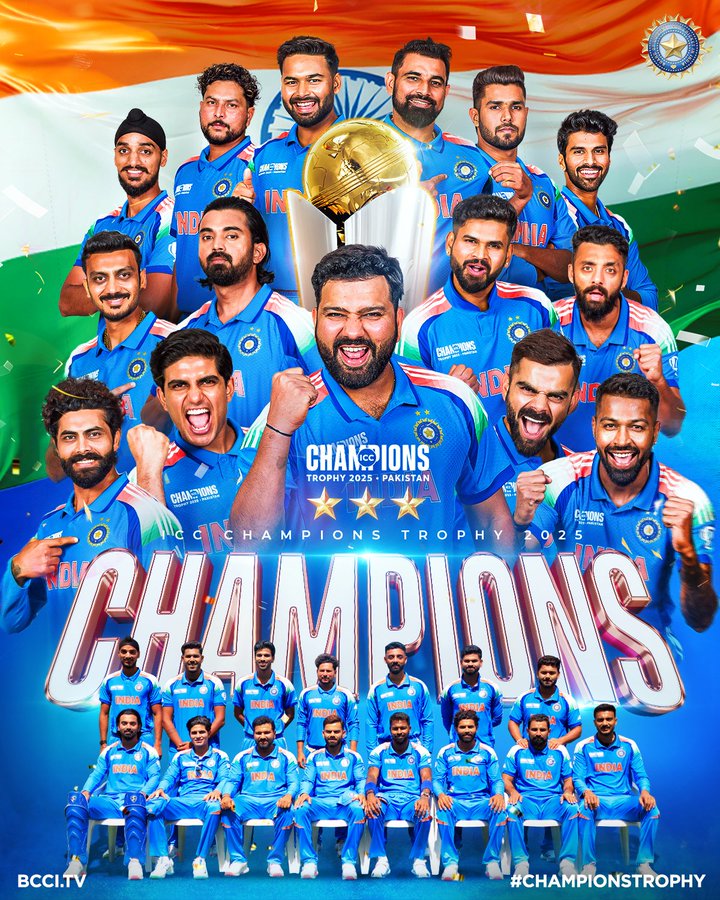
The ICC Champions Trophy final between India and New Zealand showed how important it is to grab key moments in pressure situations. Here are the main parts of the match in simple English:

Kuldeep’s Twin Strikes
New Zealand’s openers, Rachin Ravindra and Will Young, started strongly by scoring 57 runs in the first 8 overs. However, things changed when Rohit Sharma brought in Kuldeep Yadav right after the first powerplay.
- First Wicket: On his very first ball, Kuldeep bowled a well-disguised googly that tricked Ravindra. Expecting a normal spinning ball, Ravindra misjudged it. The ball slipped through the gap between his bat and pad and hit the stumps, stopping New Zealand’s momentum.
- Second Wicket: Buoyed by his success, Kuldeep then bowled a flighted delivery that stopped suddenly on Kane Williamson. Williamson, trying to push the ball forward, played a wrong shot which led to an easy catch for the bowler.

New Zealand’s 81-Ball Boundary Drought
After Kuldeep Yadav and Varun Chakravarthy took the wickets of the openers, India’s spin bowlers kept bowling very accurately. Once Kane Williamson was out, New Zealand did not score any boundaries for 81 balls (more than 13 overs). Their batsmen found it very difficult to hit the ball to the ropes, which showed India’s strong control and put extra pressure on New Zealand.

Varun’s Dismissal of Phillips
Glenn Phillips, who made 34 runs off 52 balls, tried to steady New Zealand’s innings in a partnership with Daryl Mitchell.
- In the 38th over, Phillips attempted a pull shot off a short ball from Varun Chakravarthy towards deep square leg.
- Chakravarthy quickly changed his plan and bowled a googly from outside off stump. Expecting a normal leg-spin ball, Phillips tried to hit it hard but was fooled by the turn. The ball slipped between his bat and pad and hit the stumps.
This wicket left New Zealand at 165/5 after 37.5 overs and stopped them from speeding up the scoring in the final overs.

Rohit Sharma’s Whirlwind Start
Rohit Sharma played a brilliant innings to set the stage for India’s chase of 252.
- He started aggressively and reached 50 runs in just 41 balls, constantly finding gaps and hitting the ball hard.
- His attacking play troubled New Zealand’s bowlers, like Kyle Jamieson and Will ‘O Rourke.
- When New Zealand captain Mitchell Santner brought in Nathan Smith, Rohit hit the medium pacer for 14 runs in the 8th over.
Batting alongside Shubman Gill, they built a strong opening partnership of 105 runs, which meant the other Indian batsmen did not face too much pressure later.
Shreyas Iyer’s Middle-Overs Handling
After Rohit Sharma got out, Shreyas Iyer came in during a difficult time when New Zealand’s spinners, especially Mitchell Santner and Michael Bracewell, were doing very well.
- Iyer stayed calm and mixed solid defense with smart attacking shots.
- He used his feet well by stepping out to avoid the spin and found gaps for singles and doubles.
- In the 21st over, he played a clean pull shot off Santner that went to the boundary, boosting India’s momentum.
His calm and smart batting helped keep the innings steady during a crucial phase.

KL Rahul’s Finishing Touches
After Axar Patel’s dismissal, with India at 203/4, the pressure was high.
- KL Rahul took charge and mixed careful defense with timely aggressive shots.
- Even after Hardik Pandya got out, Rahul remained steady and finished not out on 34 runs.
His calm and effective play in the final stage helped India win their third Champions Trophy title.
This simple breakdown shows how each important moment and player contribution led India to success in the match.

